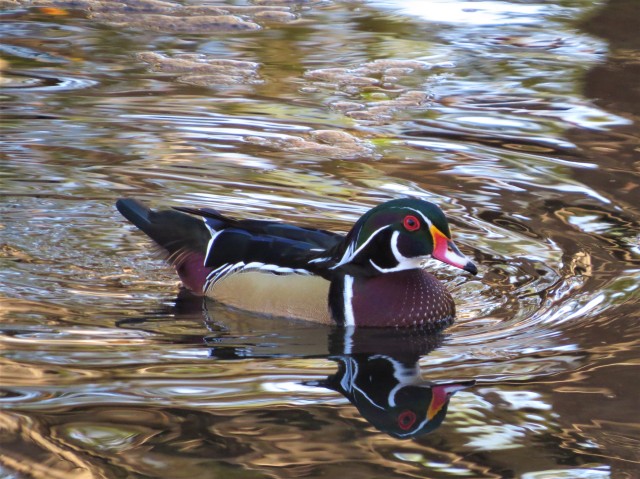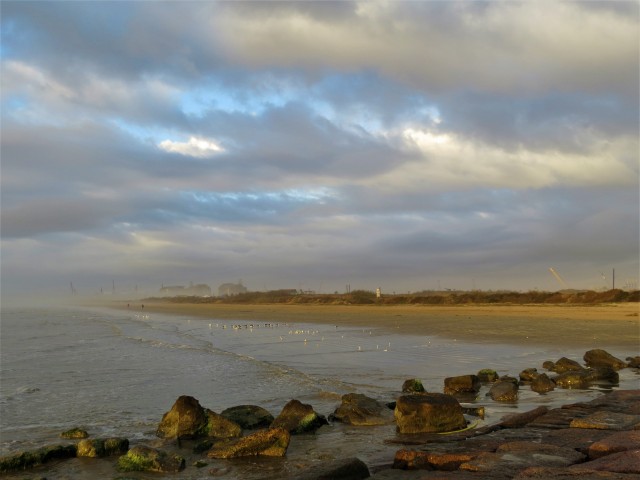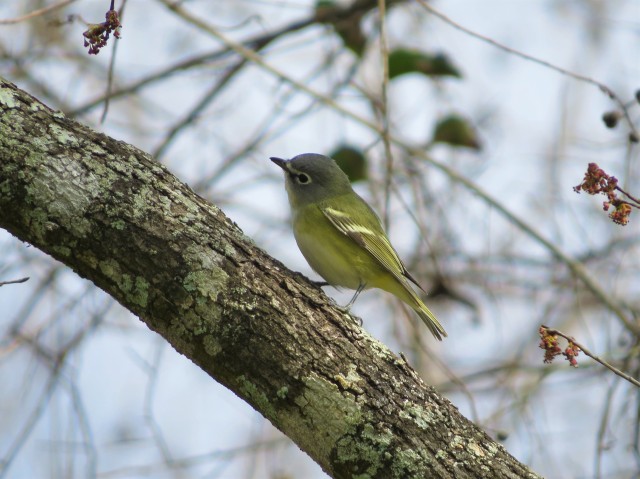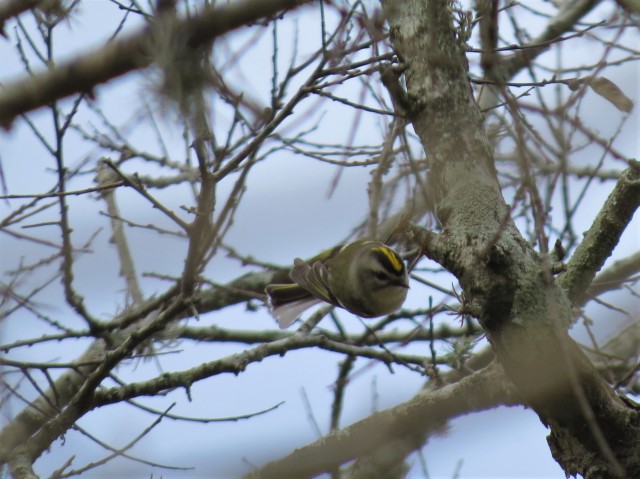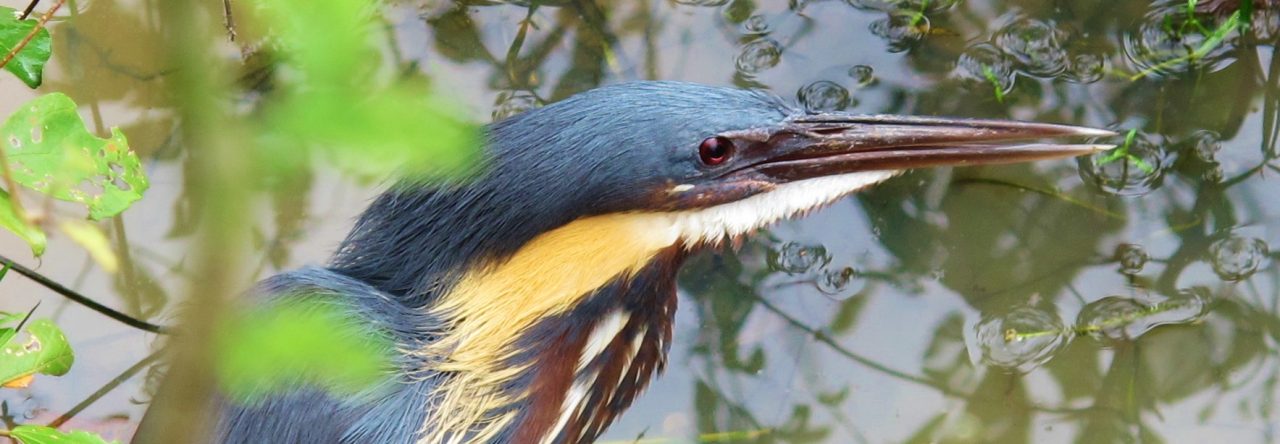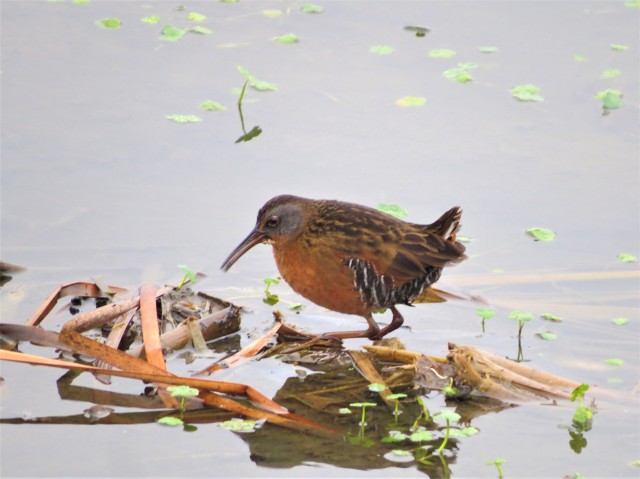
In the full month since my last update, birding has been steady but not spectacular. I would even have said things were fairly good, were it not for a rather painful “dip” of a mega that showed up pretty much in my backyard in New Braunfels (well, a ten-minute drive away, which is practically backyard by Texas standards).
Late on a Saturday night, a week-old report (complete with photos) of a female Elegant Trogon appeared on the Facebook group “What’s That Bird?”. The Trogon was said to have been photographed in Panther Canyon, which is a scenic, three-quarter-mile long trail adjoining Landa Park close to downtown New Braunfels. I happened to be already in town when the news broke, so naturally I went straight to Panther Canyon at first light the next day. The chances of relocating the bird appeared to be vanishingly small, at best – the report was already a week old, and the bird could easily have moved on. Also, trogons of all species are notoriously hard to find. They spend long periods of time perched motionless, and are usually easiest to locate when vocalizing, which a winter female would most likely not be doing.
It’s kind of an odd feeling to be chasing a bird that you’re pretty sure you’re not going to find. After a couple of hours in the canyon, along with about ten other birders, I called it a day and went up to Canyon Lake instead, where the birding was much more rewarding with both Canyon Wren and Rock Wren within 30 feet of each other along the dam, plus several other goodies including a Woodhouse’s Scrub-Jay in trees near the dam, and a group of Eared Grebes on the water.
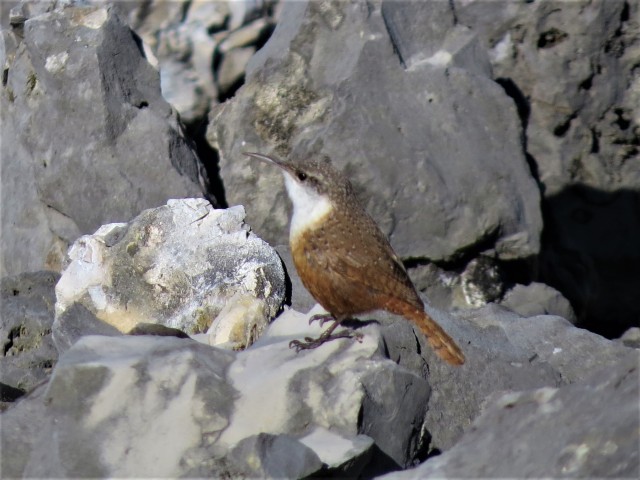
It was quite a surprise when news came through late in the day of the Elegant Trogon having been seen in Panther Canyon shortly before dark, and Carlos Ross managed to take some photos which confirmed the presence of this bird beyond all doubt. I happened to have already taken Monday morning off work, so there I was again in the canyon at first light the next day. I could only spare a couple of hours before I had to head back to Houston, however once again the Elegant Trogon didn’t show. Birding in Panther Canyon was proving to be an endurance test because – while the habitat bears a passing resemblance to exciting Elegant Trogon habitat in southeast Arizona – there seem to be very few birds living in there. Chases are always much more enjoyable when there are other birds around to maintain a birder’s focus and interest.
As I stalked slowly up and down the canyon, staring at Trogon-less trees, I was reminded of a chase (in the UK we call it a “twitch”) to see a Buff-bellied Pipit in Lincolnshire on a bitterly cold and overcast day in the depths of winter in about 2003. It was a near four-hour drive to the site, an enormous bare earth field just inland from the coast. A hundred birders lined up along the edge of the field for an eight-hour vigil, in the teeth of an easterly gale, scanning for the pipit. During that time I saw perhaps half a dozen species, and not a whiff of my target bird. The long drive home in the gloom of a winter afternoon was almost a relief after such a miserable day.
Anyway, the Elegant Trogon was refound in Panther Canyon at around 3.00pm, meaning that several of the birders who had been there in the morning had been looking for almost eight hours before locating the bird. Their patience and dedication is highly commendable. The Trogon was seen again on Tuesday (for prolonged periods, naturally while I was at work in Houston) and Thursday, but not on Wednesday and Friday despite plenty of people out there looking. It was always being found in the afternoons, sometimes right before dusk, so on Saturday I spent the last three hours of daylight in the canyon (along with perhaps fifty birders) with no luck. It has not been seen since, but it is possibly still present – there is a high chance the bird is wintering in the area, and either moves elsewhere for prolonged periods, or (most likely) is so unobtrusive that it basically never gets found along the canyon unless it is close enough for birders to almost trip over it. It surely is no coincidence that every time the bird has been found, it has initially been located within a few feet of the trail or even in trees directly above it.
Landa Park did have a consolation prize to offer on Saturday, a female Rusty Blackbird at the lake, an excellent county bird in what seems to have been a good winter for stray individuals of this species in central Texas. I could at least claim THAT for my Comal county list, which at 142 species as I write, is steadily moving in the right direction!
